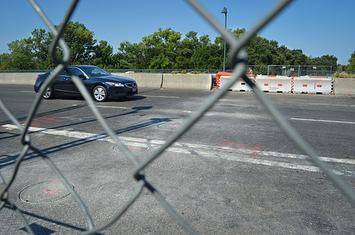
A recent report from the RAND Corporation looks at America’s infrastructure and concludes that “not everything is broken.” In fact, what is broken, more than the infrastructure itself, is “our approach to funding and financing public works.” This is largely because governments by-pass market signals and rely on “often complicated and multilayered governance arrangements and competing public goals and preferences” to make decisions about where to spend money.
For example, the report shows that government spending on infrastructure as a percentage of gross domestic product declined from a peak of 3 percent of GDP in 1960 to about 2.5 percent in 1980, and has hovered between 2.5 and 2.7 percent since then. But governments also made a clear trade-off in infrastructure spending: spending on roads declined from 1.6 percent of GPD in 1960 to around 1 percent in and since 1980, while government spending on mass transit grew from 0.1 percent in 1970 to 0.4 percent in and since 1980.
This would be fine if spending on mass transit had been as productive as spending on highways had been. But it wasn’t. Until the 2008 financial crisis, per capita driving continued to grow despite the lack of much capital spending on new roads, while per capita transit ridership was stagnant or declining. The report doesn’t have data after 2014, when per capita driving began to increase again while transit ridership began to collapse.
For highways, the report recommends transition to mileage-based fee collection “that more effectively links revenue collection to highway use.” For other forms of infrastructure, the report says governments should focus on “renewal of aging infrastructure and new infrastructure incorporating advanced technologies.” The report also suggests that maintenance spending focus on “mission-critical military bases, dams, levees, locks, national parks, and other vital federal infrastructure.”
Unfortunately, unless managers can use the kind of market signals generated by mileage-based and similar user fees, terms like “advanced technologies” and “mission critical” aren’t very useful. Many bureaucrats and politicians believe that streetcars are an advanced technology, and everyone likes to believe that their favorite infrastructure is somehow “vital” to the national economy.
The report does make clear that “shovel-ready” was a dumb criterion for selecting projects when Congress passed the economic recovery bill in 2009. Just because someone has written an environmental impact statement for a project doesn’t make that project worthwhile. The environmental impact statement for the Florida high-speed rail project, for example, specifically concluded that the project was not environmentally sound, yet Obama was willing to fund it simply because it was shovel-ready.
In addition to noting that cost and usage forecasts for new projects have been systematically biased to underestimate costs and overestimate usage, the report also observes that there has been a “bias towards capital spending over operations and maintenance.” This, of course, has led to the maintenance debacles in the New York, Washington, and other heavy-rail systems.
Unfortunately, the report does not offer a good solution to these problems. For example, one of its recommendations is that “Congress should require each agency to report on their estimate of funding needs over the next 25 years to sustain the infrastructure under its jurisdiction.” Of course, the result will be that every agency vastly overestimates its real funding needs to make sure they all get their “fair share” of any federal spending.
There’s really only three ways to make infrastructure spending decisions. One is in response to market signals: how much do things really cost and will people really pay for them? The second is in response to political signals: who benefits, who pays, and who is most powerful. The third is in response to religious criteria: which projects are supposedly more sacred or moral than others.
The shift in spending from highways to transit has been sustained partly because the transit industry has made itself appear to be more moral than highways, and used that religious feeling to bolster the political support from contractors who benefit from transit spending. The result has been a huge perversion of spending priorities. The only way to cure this is to go back to a market system of paying for all forms of transportation out of user fees, which would insure both better maintenance and less reckless capital spending.
This piece first appeared on The Antiplanner.
Randal O’Toole is a senior fellow with the Cato Institute specializing in land use and transportation policy. He has written several books demonstrating the futility of government planning. Prior to working for Cato, he taught environmental economics at Yale, UC Berkeley, and Utah State University.
Photo: U.S. Army Corps of Engineers from USA [CC BY 2.0], via Wikimedia Commons












